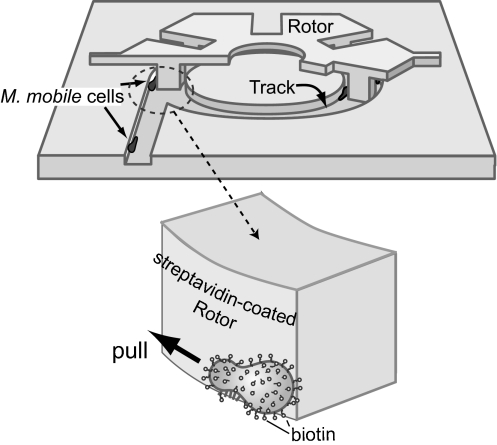Fig. 1.
Schematic illustrations of a microrotary motor driven by the gliding bacterium M. mobile. The microrotary motor consists of three parts, an Si circular track, an SiO2 rotor whose protrusions just fit into the groove of the track, and living cells of M. mobile that circle unidirectionally within the track. Unidirectional circling of the M. mobile cells is achieved by asymmetric introduction of the cells into the circular track along the track walls (19). The rotor is docked onto the track and binds to the circling M. mobile cells by biotin–streptavidin interactions. As a result, the rotor is pulled by the cells and rotates in one direction.

